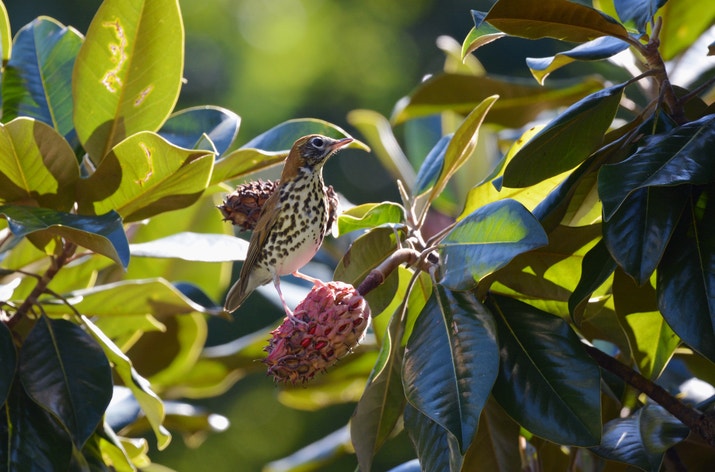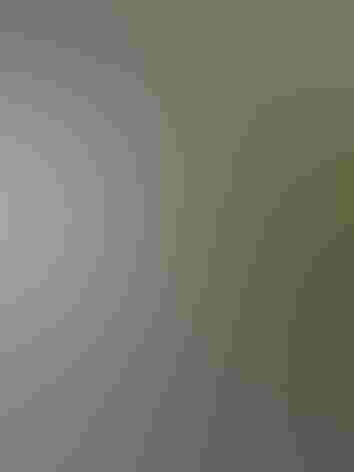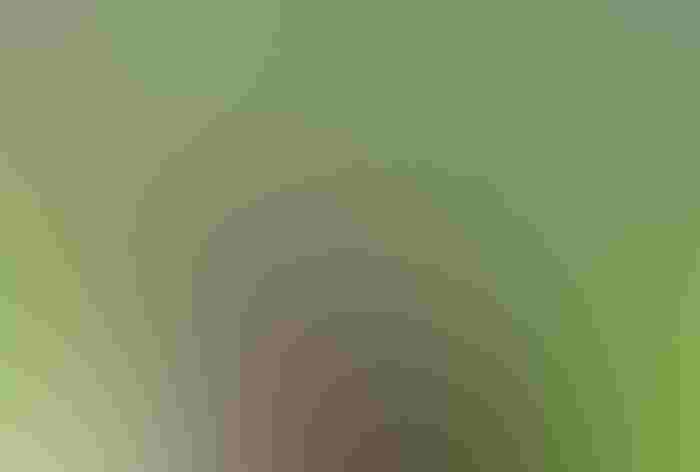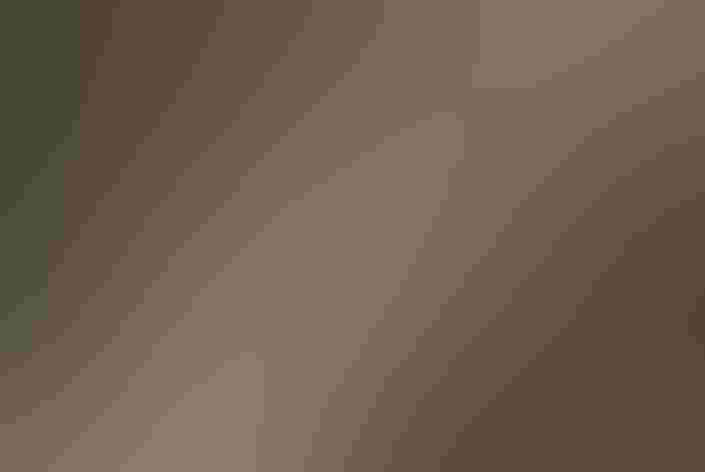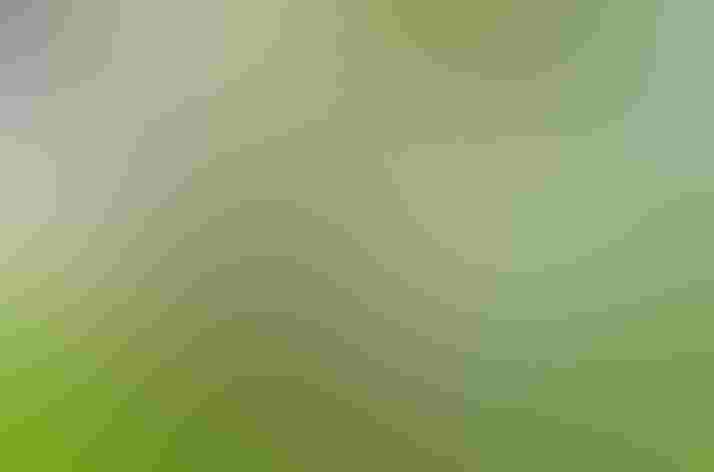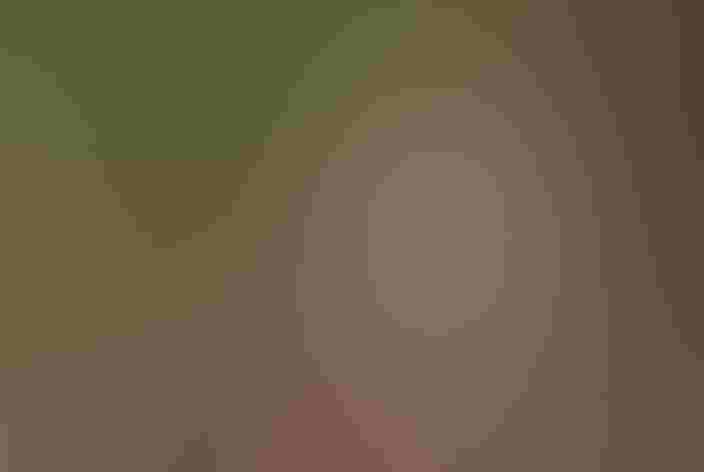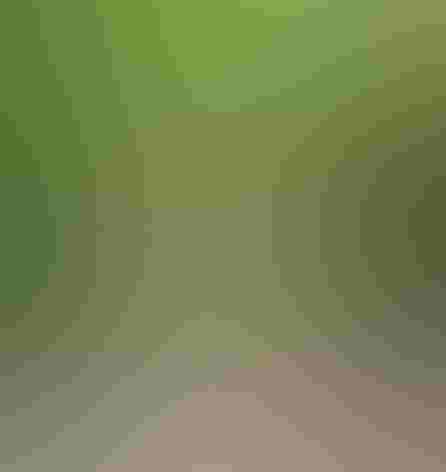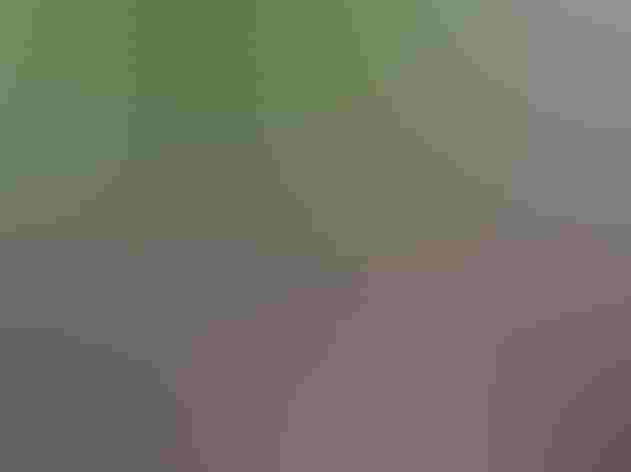Wood Thrush
At a Glance
Seemingly not as shy as the other brown thrushes, not as bold as the Robin, the Wood Thrush seems intermediate between those two related groups. It sometimes nests in suburbs and city parks, and it is still common in many eastern woodlands, where its flutelike songs add music to summer mornings. However, numbers of Wood Thrushes have declined seriously in recent decades, focusing the attention of conservationists on the problems facing our migratory birds.
All bird guide text and rangemaps adapted from Lives of North American Birds by Kenn Kaufman© 1996, used by permission of Houghton Mifflin Harcourt Publishing Company. All rights reserved.
Category
Perching Birds, Thrushes
Conservation
Near Threatened
Habitat
Forests and Woodlands, Shrublands, Savannas, and Thickets
Region
California, Eastern Canada, Florida, Great Lakes, Mid Atlantic, New England, Plains, Rocky Mountains, Southeast, Southwest, Texas, Western Canada
Behavior
Direct Flight
Population
12.000.000
Range & Identification
Migration & Range Maps
Migrates mostly at night. Many migrate across Gulf of Mexico in spring and fall.
Description
8" (20 cm). Round black spots on white chest. Brown above, shading to reddish brown on head; bold eye-ring. Stronger markings than other brown thrushes. Brown Thrasher striped (not spotted) has yellow eyes, longer tail.
Size
About the size of a Crow, About the size of a Robin
Color
Black, Brown, Red, White
Wing Shape
Pointed
Tail Shape
Notched, Rounded, Square-tipped
Songs and Calls
A series of rich, melodious, flute-like phrases; call a sharp pit-pit-pit-pit.
Call Pattern
Rising
Call Type
Buzz, Chirp/Chip, Flute, Trill, Whistle
Habitat
Mainly deciduous woodlands. Breeds in the understory of woodlands, mostly deciduous but sometimes mixed, in areas with tall trees. More numerous in damp forest and near streams than in drier woods; will nest in suburban areas where there are enough large trees. In migration, found in various kinds of woodland. Winters in understory of lowland tropical forest.
Sign up for Audubon's newsletter to learn more about birds like the Wood Thrush
Behavior
Eggs
Usually 3-4. Pale greenish blue, unmarked. Incubation is by female only, 13-14 days.
Young
Both parents feed nestlings. Young leave the nest about 12 days after hatching. 1-2 broods per year.
Feeding Behavior
Forages mostly on ground, usually in forest undergrowth but occasionally on open lawns. Will use its bill to flip leaf-litter aside as it seeks insects. Feeds on berries up in shrubs and trees.
Diet
Mostly insects and berries. Feeds on many insects, especially in breeding season, including beetles, caterpillars, ants, crickets, moths, and many others; also spiders, earthworms, and snails. Berries and small fruits are eaten at all seasons. Young are fed mostly insects but also some berries.
Nesting
Male arrives first on breeding grounds, establishes territory, and defends it by singing. Often reacts aggressively to other thrushes in territory, such as Robin or Veery. In courtship, male may chase female in fast circular flights among the trees. Nest: Placed in vertical fork of tree (usually deciduous) or saddled on horizontal branch, usually about 10-15' above the ground, sometimes lower, rarely as high as 50'. Nest (built by female) is rather like Robin's nest, an open cup of grass, leaves, moss, weeds, bark strips, mixed with mud; has lining of soft material such as rootlets. Often adds pieces of white paper or other trash to nest.
Climate Vulnerability
Conservation Status
Numbers have declined seriously in recent decades. Cowbirds lay many eggs in their nests, so the thrushes often raise mainly cowbirds, with few young of their own. As forests are cut into smaller fragments, it apparently becomes easier for cowbirds to penetrate these small woodlots and find more of the thrush nests. The Wood Thrush is probably also losing wintering habitat in the tropics.
Climate Threats Facing the Wood Thrush
Choose a temperature scenario below to see which threats will affect this species as warming increases. The same climate change-driven threats that put birds at risk will affect other wildlife and people, too.
